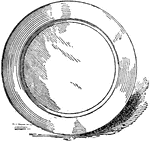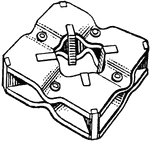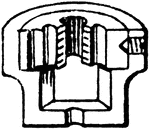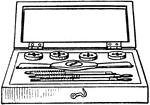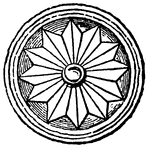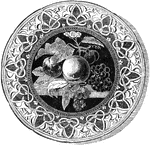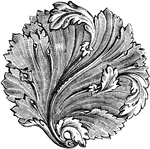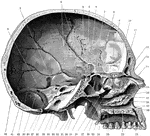
Skull Seen From Side
Shown is the inner aspect of the left half of the skull sagittally divided. Labels: 1, suture between…

Coronal Section of Skull
Shown is a coronal section passing inferiorly through interval between between the first and second…
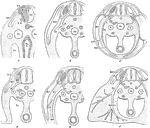
Development of the Spinal Nerve
Development of the spinal nerves. A, Formation of nerve roots. B, Formation of nerve trunk (N).C, Formation…

Communion Plate Presented by Queen Anne
During the reign of Queen Anne a valuable communion set was presented by her Majesty to the Mohawk chapel…

Longitudinal Section of Horse Skull
Longitudinal section of a horse's skull. Labels: 1, supraoccipital bone and crest; 2, parietal bone;…
Screw Stock
"A handle for holding the threaded die by which the thread is cut on a bar, a nut, or a pipe; a die-stock;…

Blowfish
Tetraodontidae is a family of primarily marine and estuarine fish. The family includes many familiar…
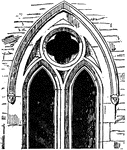
Plate Tracery, Charlton-on-Oxmore
With the growth in size of the windows and the progressive suppression of the lateral walls of vaulted…
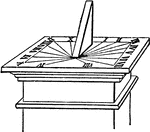
Sundial
A sundial is a device that measures time by the position of the Sun. In common designs such as the horizontal…
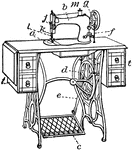
Singer Sewing Machine
"Singer sewing-machine. a is the frame and cloth-plate or bed-plate; b, arm; c, treadle; e, pitman;…
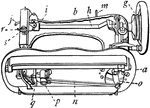
Singer Sewing Machine
"Singer sewing-machine. a is the frame and cloth-plate or bed-plate; b, arm; ... g, small driving-wheel…

Sea Urchin Fossils
An illustration of various sea urchin fossils. "1, Palaeechinus; Carboniferous; 2, A plate and radiole…

Plan of a Strike Fault
An illustration of the plan of a strike fault. The fault surface is usually near vertical and the footwall…
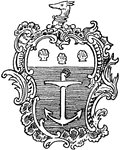
Rocaille Coquille
"Rocaille coquille, book-plate ornamentation in varying forms of the scallop-shell upon rockwork." -Whitney,…
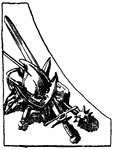
Left War Symbol
The left war symbol has a border made of a copper plate engraving, designed by Heinrich Goltzius (1558-1617).
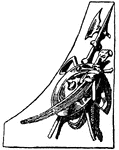
Right War Symbol
The right war symbol has a border made of a copper plate engraving, designed by Heinrich Goltzius (1558-1617).

Wrought-Iron Tomb Cross
The wrought-iron tomb cross was designed during the 18th century. Found in Thiengen, Germany, the center…

Wrought-Iron Tomb Cross
The wrought-iron tomb cross was designed during the 18th century. Found in Thiengen, Germany, the center…
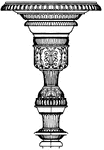
Antique Candelabrum Capital
The Antique candelabrum capital has a plate or cup like form on the top where a lamp or candle can be…
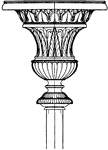
Antique Candelabrum Capital
The Antique candelabrum capital has a plate or cup like form on the top where a lamp or candle can be…
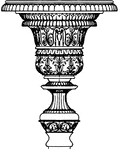
Antique Candelabrum Capital
The Antique candelabrum capital has a plate or cup like form on the top where a lamp or candle can be…
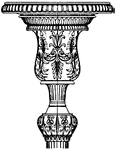
Antique Candelabrum Capital
The Antique candelabrum capital has a plate or cup like form on the top where a lamp or candle can be…
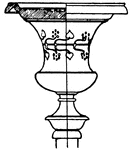
Antique Candelabrum Capital
The Antique candelabrum capital has a plate or cup like form on the top where a lamp or candle can be…

Antique Candelabrum Capital
The Antique candelabrum capital has a plate or cup like form on the top where a lamp or candle can be…
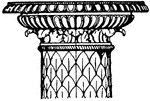
Roman Candelabrum Capital
The Roman candelabrum capital is made out of marble and terminates with a plate or table on top.
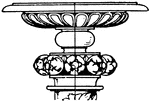
Renaissance Candelabrum Capital
The Renaissance candelabrum capital is made out of marble and terminates with a plate or table on top.…
Centipede
"A, a, Cephalic plate; b, Tergum of segment bearing first pair of legs (d); c, Tip of palpognath; e,…

Female Nautilus without Shell
An illustration of a female nautilus without the shell. "m, The dorsal "hood" formed by the enlargement…
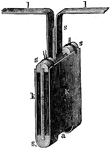
Wallaston's Battery
In Wollaston's battery, the wooden box was replaced with an earthenware vessel, and a copper plate was…

Wallaston's Battery
In Wollaston's battery, the wooden box was replaced with an earthenware vessel, and a copper plate was…
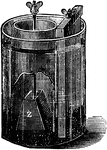
Fuller Bichromate
The cell was set up in a glass, or glazed earthenware, pot. This contained the chromic acid solution,…

Frictional Electric Machine
Now known as electrostatic generators, the Frictional electric machine produces static electricity at…

Condensing Electroscope
"An instrument for observing or detecting the existence of free electricity, and, in general, for determining…
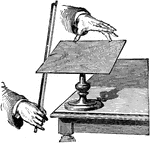
Vibration of Plates
An illustration showing the vibration of plates be using a rosined bow and a steel plate.
!["A pipe of this nature fitted with a piece of glass so as to exhibit the reed (which is a "free reed") is shown in [the illustration]. Q is the wind-chest of the bellows, into which P is fitted. In the right-hand figure the upper part of the pope is removed, so as to show the reed more clearly. A plate of metal c c, has a slit but in it, in which the tongue I may just past. By means of a curved wire, r, projecting above the top of the pipe, and the play of the tongue may be controlled and the pipe tuned. The conical pipe, H, placed at the top, serves to increase the power of the sound". -Benson, 1891](https://etc.usf.edu/clipart/62100/62146/62146_reed_mth.gif)
Reed
"A pipe of this nature fitted with a piece of glass so as to exhibit the reed (which is a "free reed")…

Fifth Wheel
"Fifth wheel, a horizontal plate, bent to form a whole or part of a circle, placed on the forward axle…
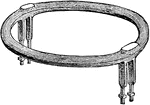
Fifth Wheel
"Fifth wheel, a horizontal plate, bent to form a whole or part of a circle, placed on the forward axle…

Torsion Apparatus
Apparatus for breaking a plate of glass by torsion, with an example of results produced.

Glass Broken by Torsion
Arrangement of fractures in a large plate of glass which was broken by torsion.
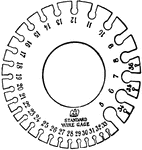
Wire Gauge
"Wire-gage, a gage for measuring the thickness of wire and sheet-metal. It is usually a plate of steel…

Gauntlet of Plate
"Gauntlet of plate, early 14th century. In medieval armor, a glove of defense." -Whitney, 1911

Gauntlet of Plate
"Gauntlet of plate, later 14th century. In medieval armor, a glove of defense." -Whitney, 1911
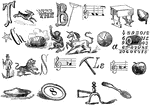
Food Rebus
"There were on the breakfast table only a cornstarch pudding, a puny corn-ball, a muffin, some dandelions,…
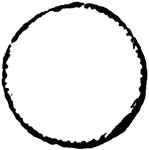
Roundlet Plate
"Plate, Argent. In addition to the foregoing tinctures, there are nine roundlets or balls used in Armory,…
Parts of the Gun
"Gun. A, breech; B, barrel; C, band; D, breech-block; E, butt; F, butt- or heel-plate; G, front sight…

Field Gun Carriage
"Field-gun Carriage. A, stock. B, cheek. a, lunette; b, trail-plate; c, c, pointing-rings; d, handle;…
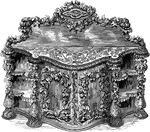
Sideboard
This sideboard is inlaid with fine plate glass, and enriched by floral carvings in an Italian style.…

Chandeliers
This chandelier is made out of brass. It has an elongated design with chains holding a plate at the…

Gold Leaf Electroscope
"In the gold-leaf electroscope (invented by Bennet in 1787), two light strips of gold-leaf hang from…
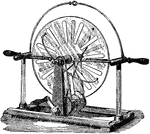
Wimshurst Machine
The Wimshurst Machine is an electrostatic device to generate high voltages. "It consists of two circular…
